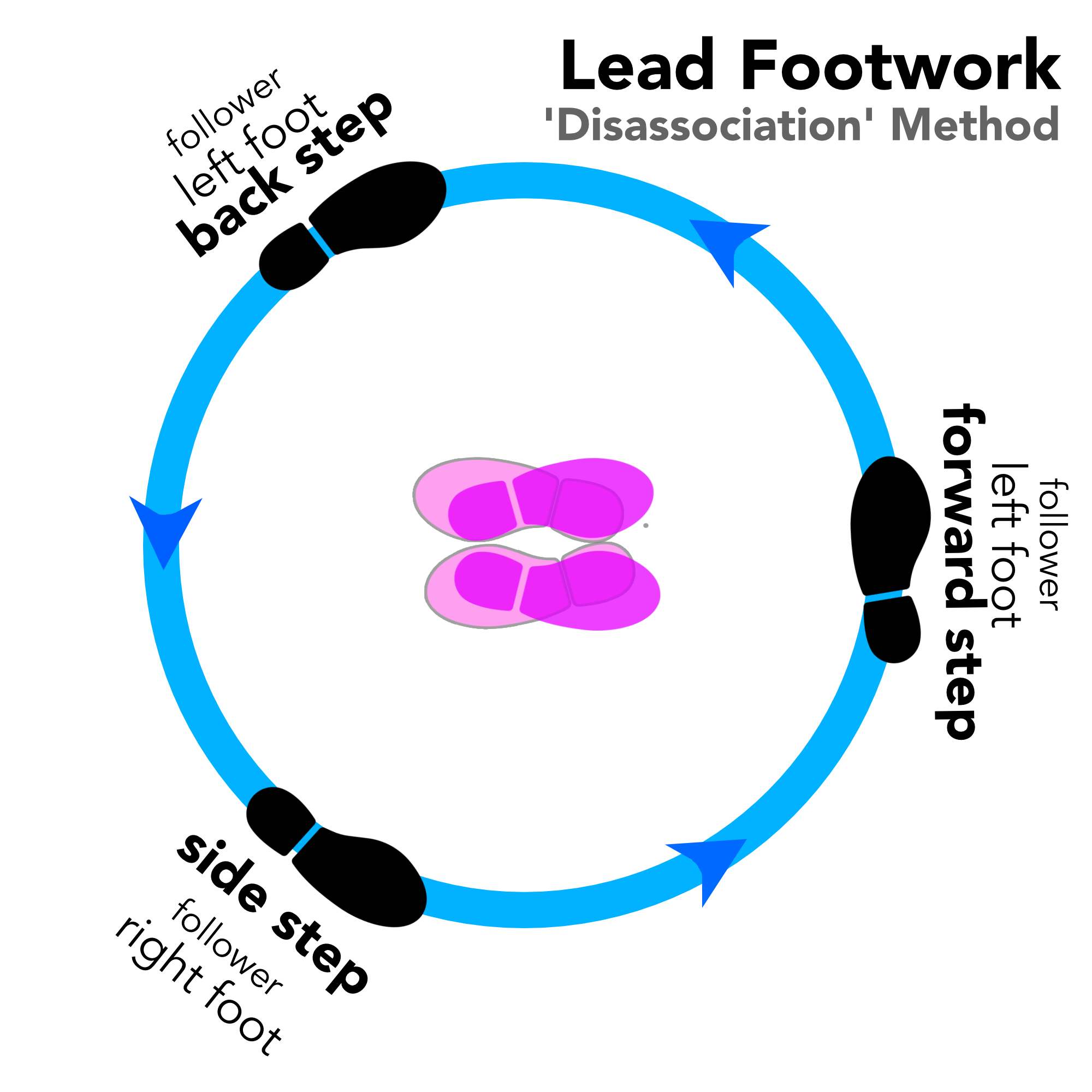There are 2 Sides to the Type 3 turn called a Molinete Giro Structure.
In this post we’ll briefly touch on the ‘Giro’ part of the structure itself. The word ‘Giro’ comes from the Spanish word, ‘Girar’ which means ‘To Turn’ in English. ‘Giro’ is the first person singular, which roughly translates as “I turn’.
I point out the proper Spanish grammatical because. 1.) The etymology of the word application it has a direct bearing on what you are doing as a Lead; And 2.) Because this part of what you understand about what everyone calls the ‘Molinete’ is only 1/2 of the turn itself! The other half is the Lead’s side of that structure or ‘The Giro’.
Don’t mishear me in thinking that the role of the Molinete isn’t important or that I’m minimizing it. No, the polar opposite is true. In fact the Molinete structure is where ALL THE PHYSICAL LABOR is happening. However, the other side of this is that there is a Lead component and because everyone always focuses on what the feet are doing for the Lead, we’ll go there. However, understand there are actually 2 components to what the Lead is doing. The embrace component and the feet component. In this little snippet we’ll briefly touch on the ‘feet’ component.
In the graphic below what you’re looking at is 1 of 4 ways the Lead can move their feet. This is known as the Disassociative method to how they would do that. There are 3 others. However, this method is the one you are always shooting for. Why ? Because a.) It is crucially functional. b.) It’s really simple. c.) It’s effing cool AF. Let’s look at item ‘b’ for a moment > Simple does not mean ‘Easy’. It means that the structure is simple to do once you have mastered the underlying technique. But it is NOT easy to get there. This is work. Hard work.
In short the Disassociative Method is keeping one’s feet together, placing your weight over (in this instance) the pad of your LEFT foot , then Disassociating with your upper torso to Lead Left, and then APPLYING that DISASSOCIATION in the lower half of your body. E.g. Your legs/knees/feet! If, however, you’re going to Lead RIGHT, then the weight would be placed over the pad of the RIGHT foot, and then disassociated to the RIGHT, and applying the disassociation to the RIGHT.
Writing those words, and doing what those words mean, are two very different things. VERY different. The reason why they’re different is because most people (not Lead or Follow but PEOPLE) fail at engaging/generating this idea and putting it into practice. If you’re curious to see what this is really talking about, I have a series of videos that show the application of this idea, over and over and over again. They’re on youtube, start with this one >
then when you’re done with that one, try this
and then this
that should get the point across.
As to the graphic above and why it’s relevant, ideally we want to use Applied Disassociation as our foot rotation for the Giro component of the Molinete/Giro Structure itself. While there are 3 other methods, which my forthcoming article and video goes over, the fact is that using the 4th method is preferred for a wide variety of reasons.

